SNVS170D October 2001 – April 2016 LP2983
PRODUCTION DATA.
- 1 Features
- 2 Applications
- 3 Description
- 4 Revision History
- 5 Pin Configuration and Functions
- 6 Specifications
- 7 Detailed Description
- 8 Application and Implementation
- 9 Power Supply Recommendations
- 10Layout
- 11Device and Documentation Support
- 12Mechanical, Packaging, and Orderable Information
Package Options
Mechanical Data (Package|Pins)
- DBV|5
Thermal pad, mechanical data (Package|Pins)
Orderable Information
6 Specifications
6.1 Absolute Maximum Ratings
over operating free-air temperature range (unless otherwise noted)(1)| MIN | MAX | UNIT | |
|---|---|---|---|
| Input supply voltage (survival) | −0.3 | 16 | V |
| Input supply voltage (operating) | 2.3 | 16 | V |
| Shutdown input voltage (survival) | −0.3 | 16 | V |
| Output voltage (survival)(2) | −0.3 | 9 | V |
| IOUT (survival) | Short-circuit protected | ||
| Input-output voltage (survival)(3) | −0.3 | 16 | V |
| Operating junction temperature | −40 | 125 | °C |
| Power dissipation(4) | Internally limited | ||
| Storage temperature | –65 | 150 | °C |
(1) Stresses beyond those listed under Absolute Maximum Ratings may cause permanent damage to the device. These are stress ratings only, which do not imply functional operation of the device at these or any other conditions beyond those indicated under Recommended Operating Conditions. Exposure to absolute-maximum-rated conditions for extended periods may affect device reliability.
(2) If used in a dual-supply system where the regulator load is returned to a negative supply, the LP2983 output must be diode-clamped to ground.
(3) The output PNP structure contains a diode between the IN and OUT pins that is normally reverse-biased. Reversing the polarity from VIN to VOUT turn on this diode (See Reverse Input-Output Voltage).
(4) The maximum allowable power dissipation is a function of the maximum junction temperature, TJ(MAX), the junction-to-ambient thermal resistance, RθJA, and the ambient temperature, TA. The maximum allowable power dissipation at any ambient temperature is calculated using P(MAX) = (TJ(MAX) – TA) / RθJA. The value of RθJA for the SOT-23 package varies depending on the application board — the value given inThermal Information can be considered as the worstcase scenario. Exceeding the maximum allowable power dissipation causes excessive die temperature, and the regulator will go into thermal shutdown.
6.2 ESD Ratings
| VALUE | UNIT | |||
|---|---|---|---|---|
| V(ESD) | Electrostatic discharge | Human body model (HBM), per ANSI/ESDA/JEDEC JS-001 (all pins except pin 3)(1) | ±2000 | V |
| Human body model (HBM), per ANSI/ESDA/JEDEC JS-001 (pin 3)(1) | ±1000 | |||
6.3 Recommended Operating Conditions
over operating free-air temperature range (unless otherwise noted)| MIN | MAX | UNIT | |
|---|---|---|---|
| Operating junction temperature | −40 | 125 | °C |
| Input supply voltage (operating) | 2.2 | 16 | V |
6.4 Thermal Information
| THERMAL METRIC(1) | LP2983 | UNIT | |
|---|---|---|---|
| DBV (SOT-23) | |||
| 5 PINS | |||
| RθJA | Junction-to-ambient thermal resistance, High-K(2) | 169.0 | °C/W |
| RθJC(top) | Junction-to-case (top) thermal resistance | 121.8 | °C/W |
| RθJB | Junction-to-board thermal resistance | 29.5 | °C/W |
| ψJT | Junction-to-top characterization parameter | 16.1 | °C/W |
| ψJB | Junction-to-board characterization parameter | 29.0 | °C/W |
(1) For more information about traditional and new thermal metrics, see the Semiconductor and IC Package Thermal Metrics application report, SPRA953.
(2) Thermal resistance value RθJA is based on the EIA/JEDEC High-K printed circuit board defined by: JESD51-7 - High Effective Thermal Conductivity Test Board for Leaded Surface Mount Packages.
6.5 Electrical Characteristics
Unless otherwise specified: TJ = 25°C, VIN = VO(NOM) + 1 V, IL = 1 mA, COUT = 1 μF, VON/OFF = 2 V.| PARAMETER | TEST CONDITIONS | LP2981AI-XX(1) | LP2981I-XX(1) | UNIT | |||||
|---|---|---|---|---|---|---|---|---|---|
| MIN | TYP | MAX | MIN | TYP | MAX | ||||
| ΔVO | Output voltage tolerance | −1% | 1% | −1.5% | 1.5% | ||||
| 1 mA < IL < 50 mA | –2% | 2% | –2.5% | 2.5 | |||||
| 1 mA < IL < 50 mA –40°C ≤ TJ ≤ 125°C |
−2.5% | 2.5% | −3.5% | 3.5% | |||||
| 1 mA < IL < 150 mA | −2.5% | 2.5% | −3% | 3% | |||||
| 1 mA < IL < 150 mA –40°C ≤ TJ ≤ 125°C |
−3.5% | 3.5% | −4% | 4% | |||||
| ΔVO/ΔVIN | Output voltage line regulation | VO(NOM) + 1 V ≤ VIN ≤ 16 V | 0.01 | 0.016 | 0.01 | 0.016 | %/V | ||
| VO(NOM) + 1 V ≤ VIN ≤ 16 V –40°C ≤ TJ ≤ 125°C |
0.032 | 0.032 | |||||||
| IGND | Ground pin current | IL = 0 mA | 65 | 95 | 65 | 95 | μA | ||
| IL = 0 mA, –40°C ≤ TJ ≤ 125°C | 125 | 125 | |||||||
| IL = 1 mA | 75 | 110 | 75 | 110 | |||||
| IL = 1 mA, –40°C ≤ TJ ≤ 125°C | 170 | 170 | |||||||
| IL = 10 mA | 120 | 220 | 120 | 220 | |||||
| IL = 10 mA, –40°C ≤ TJ ≤ 125°C | 400 | 400 | |||||||
| IL = 50 mA | 300 | 500 | 300 | 500 | |||||
| IL = 50 mA, –40°C ≤ TJ ≤ 125°C | 900 | 900 | |||||||
| IL = 150 mA | 825 | 1200 | 825 | 1500 | |||||
| IL = 150 mA, –40°C ≤ TJ ≤ 125°C | 2000 | 2000 | |||||||
| VON/OFF < 0.15 V | 6 | 12 | 6 | 12 | |||||
| VON/OFF < 0.05 V –40°C ≤ TJ ≤ 125°C |
0.2 | 2 | 0.2 | 2 | |||||
| VIN (min) | Minimum VIN required to maintain output regulation | 2.05 | V | ||||||
| –40°C ≤ TJ ≤ 125°C | 2.2 | 2.2 | |||||||
| VON/OFF | ON/OFF input voltage(2) | High = O/P ON | 1.4 | 1.4 | V | ||||
| High = O/P ON –40°C ≤ TJ ≤ 125°C |
1.6 | 1.6 | |||||||
| Low = O/P OFF | 0.1 | 0.1 | |||||||
| Low = O/P OFF –40°C ≤ TJ ≤ 125°C |
0.05 | 0.05 | |||||||
| ION/OFF | ON/OFF input current | VON/OFF = 0 V | 0.01 | 0.01 | μA | ||||
| VON/OFF = 0 V –40°C ≤ TJ ≤ 125°C |
–2 | –2 | |||||||
| VON/OFF = 5 V | 5 | 5 | |||||||
| VON/OFF = 5 V –40°C ≤ TJ ≤ 125°C |
15 | 15 | |||||||
| en | Output noise voltage (RMS) | BW = 300 Hz to 50 kHz VOUT = 1.2 V, COUT = 10 μF |
60 | 60 | μV | ||||
| ΔVO/ΔVIN | Ripple rejection | ƒ = 1 kHz, COUT = 2.2 μF | 65 | 65 | dB | ||||
| IO(MAX) | Short-circuit current | RL = 0 Ω (steady state)(3) | 400 | 400 | mA | ||||
| IO(PK) | Peak output current | VOUT ≥ VO(NOM) − 5% | 250 | 250 | mA | ||||
(1) Limits are 100% production tested at 25°C. Limits over the operating temperature range are ensured through correlation using Statistical Quality Control (SQC) methods. The limits are used to calculate Average Outgoing Quality Level (AOQL).
(2) The ON/OFF inputs must be properly driven to prevent misoperation. For details, see Operation With ON/OFF Control.
(3) The LP2983 has foldback current limiting which allows a high peak current when VOUT > 0.5 V, and then reduces the maximum output current as VOUT is forced down to ground. See related curve(s) in Typical Characteristics section.
6.6 Typical Characteristics
Unless otherwise specified: CIN = 1 µF, COUT = 2.2 µF, VIN = VOUT(NOM) + 1, TA = 25°C, ON/OFF pin is tied to VIN.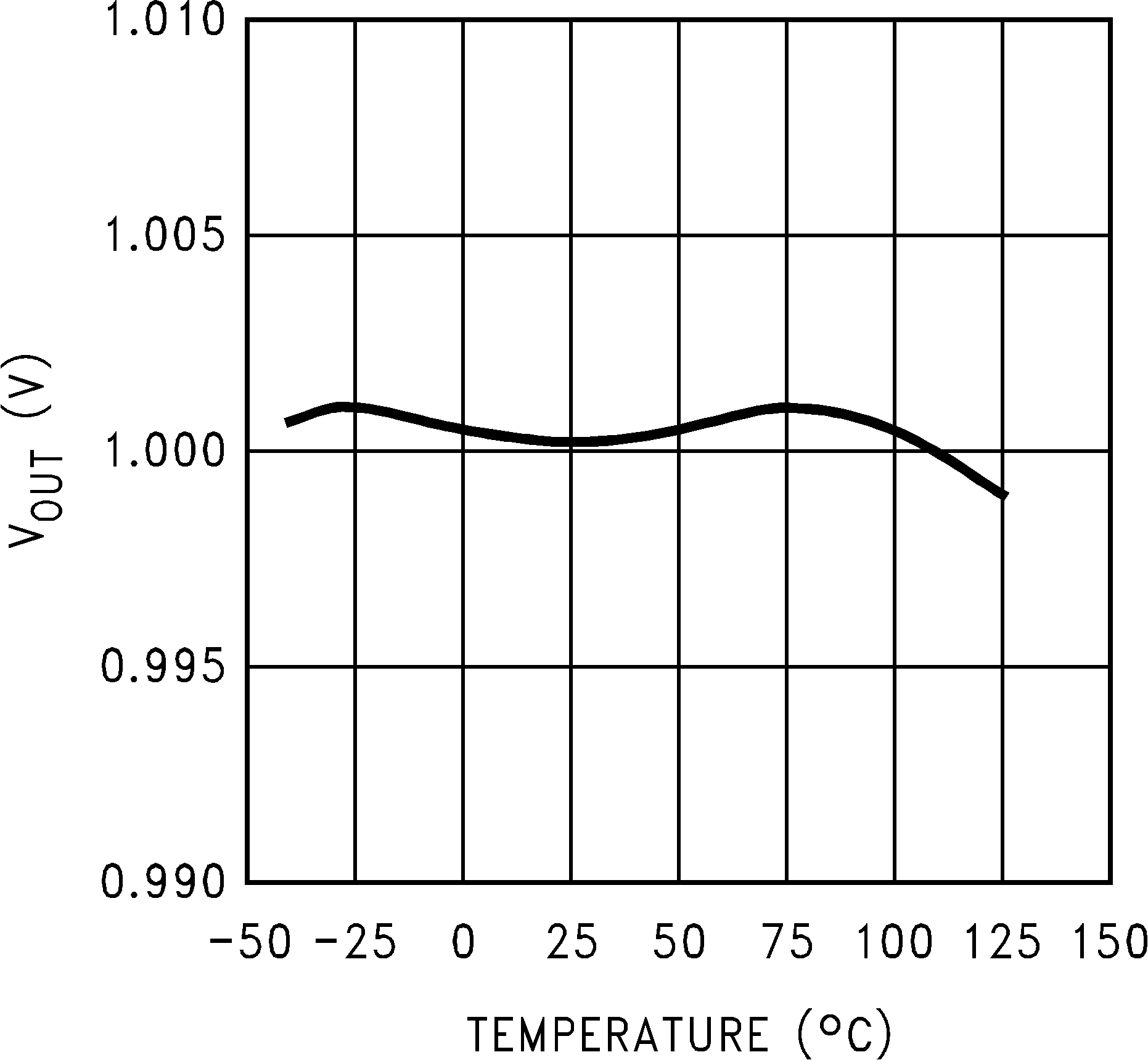
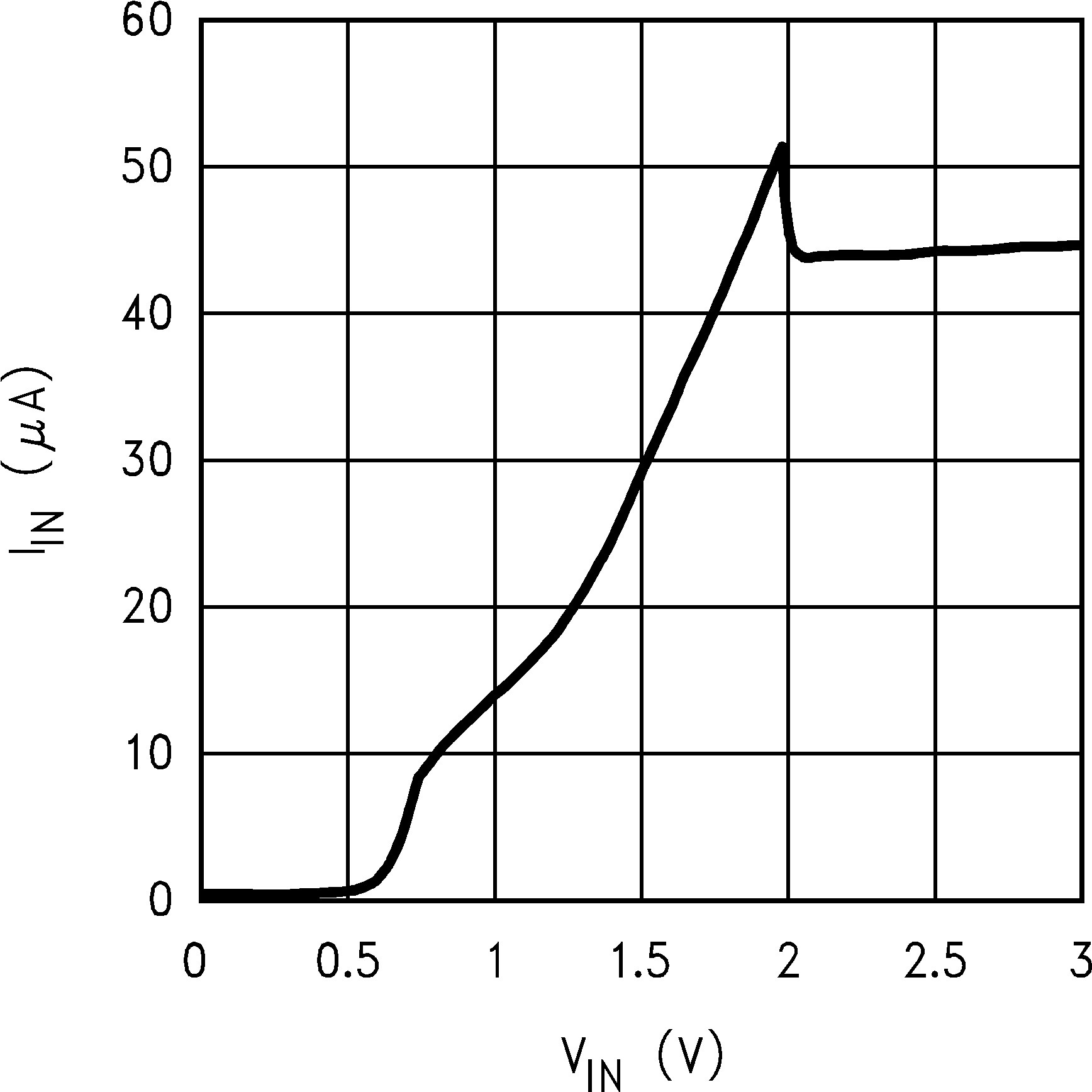
| Load = 0 mA |
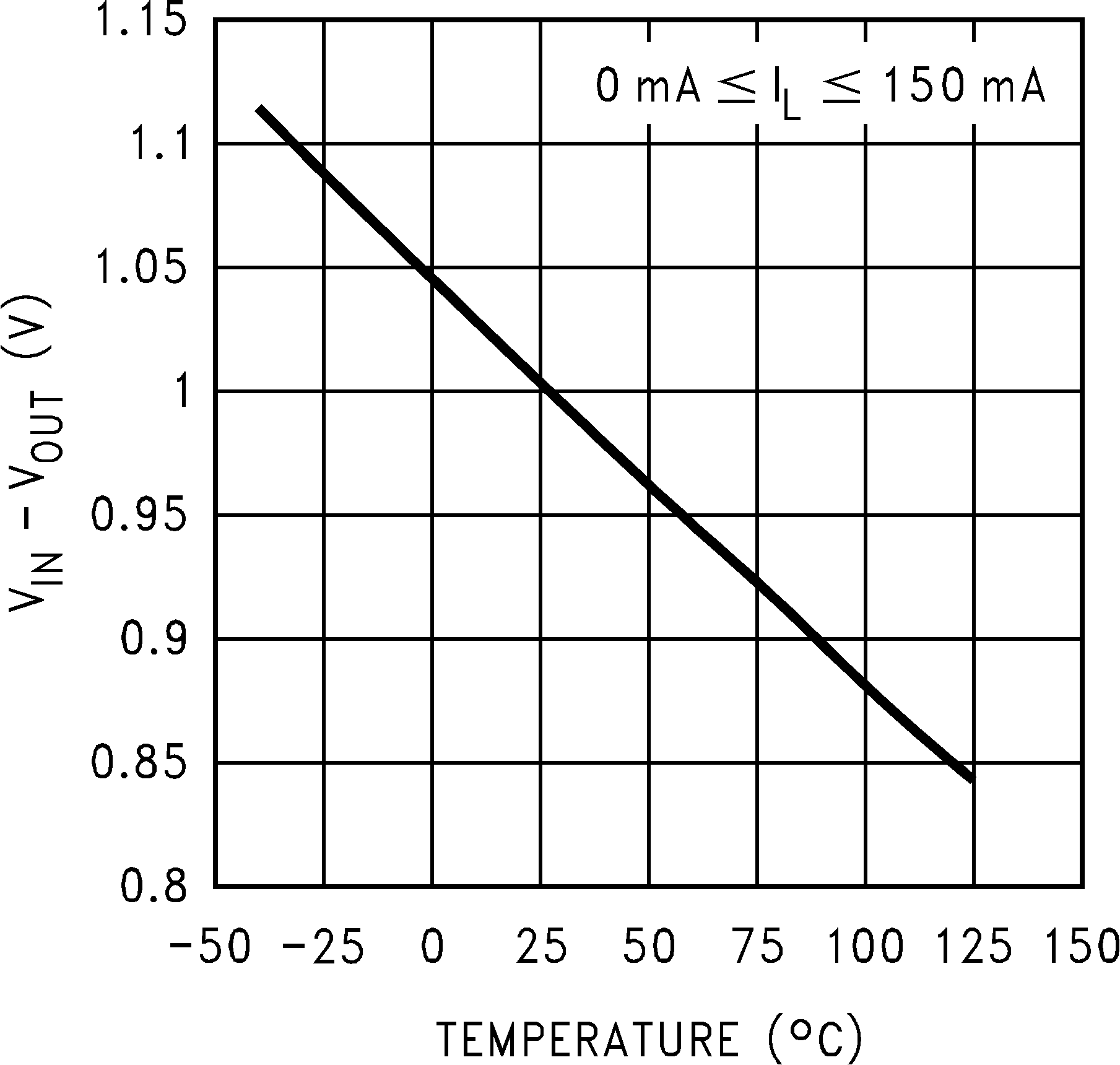

| Load = 1 mA |
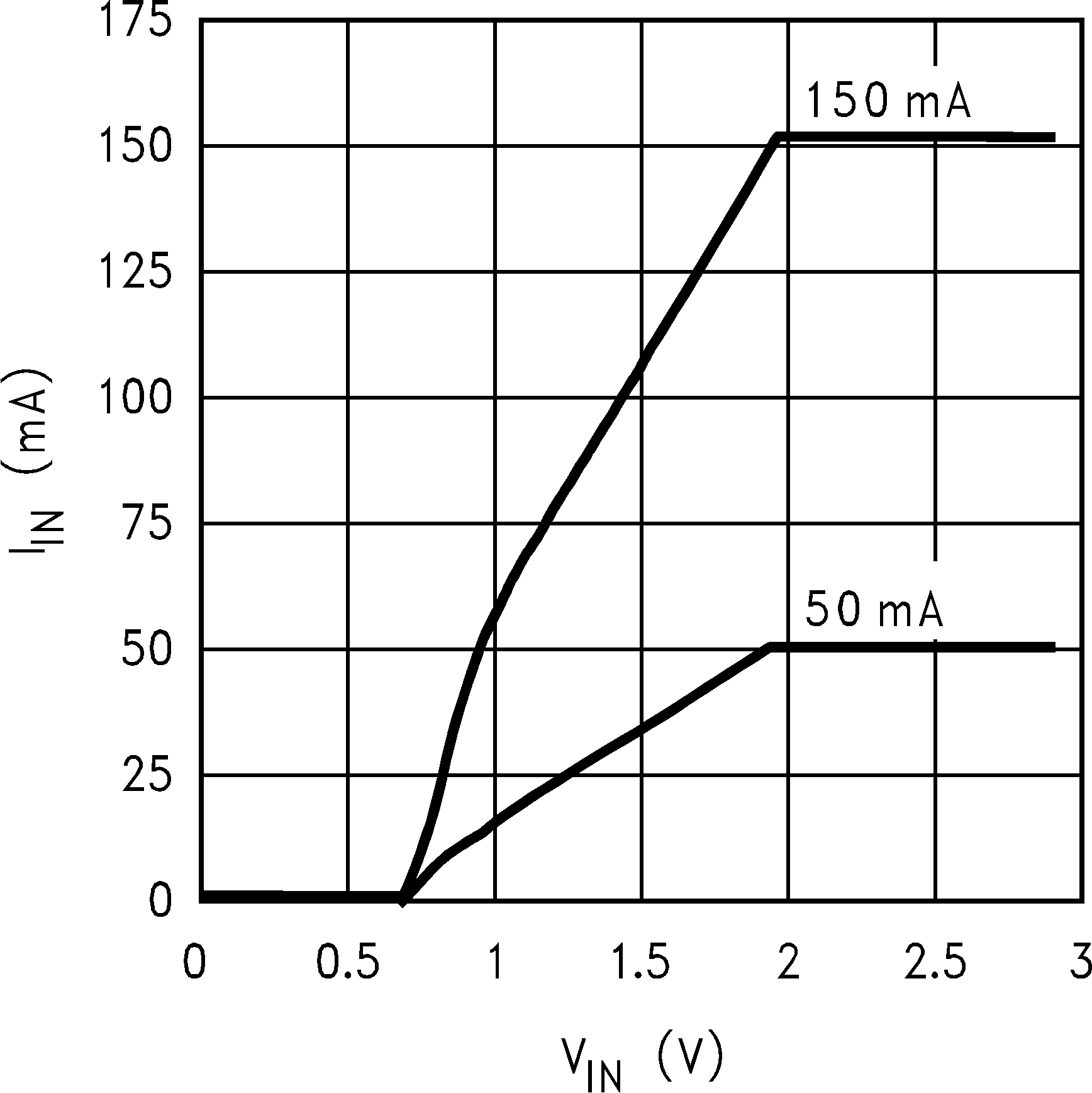
| Load = 50 mA and 150 mA | ||
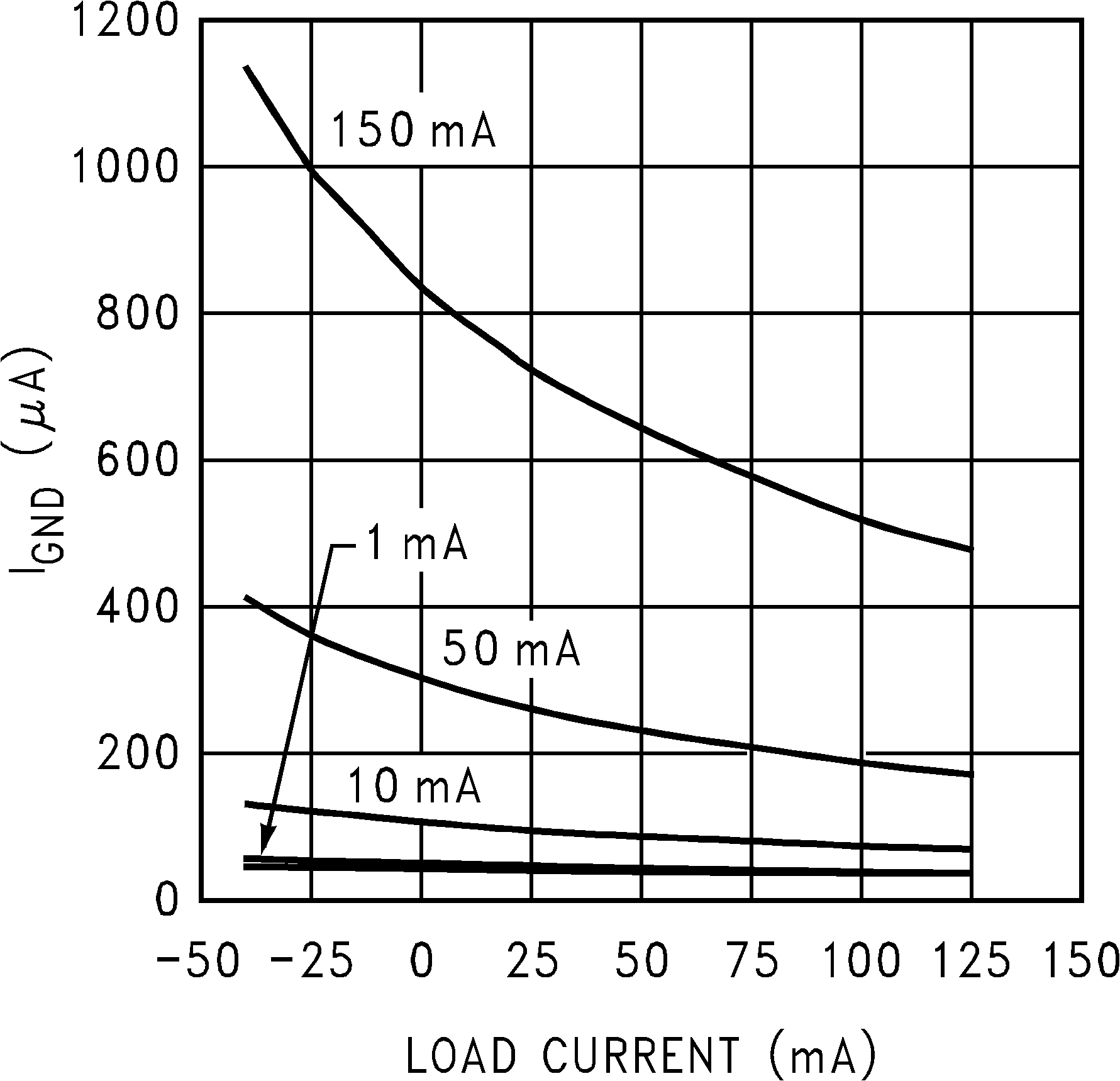
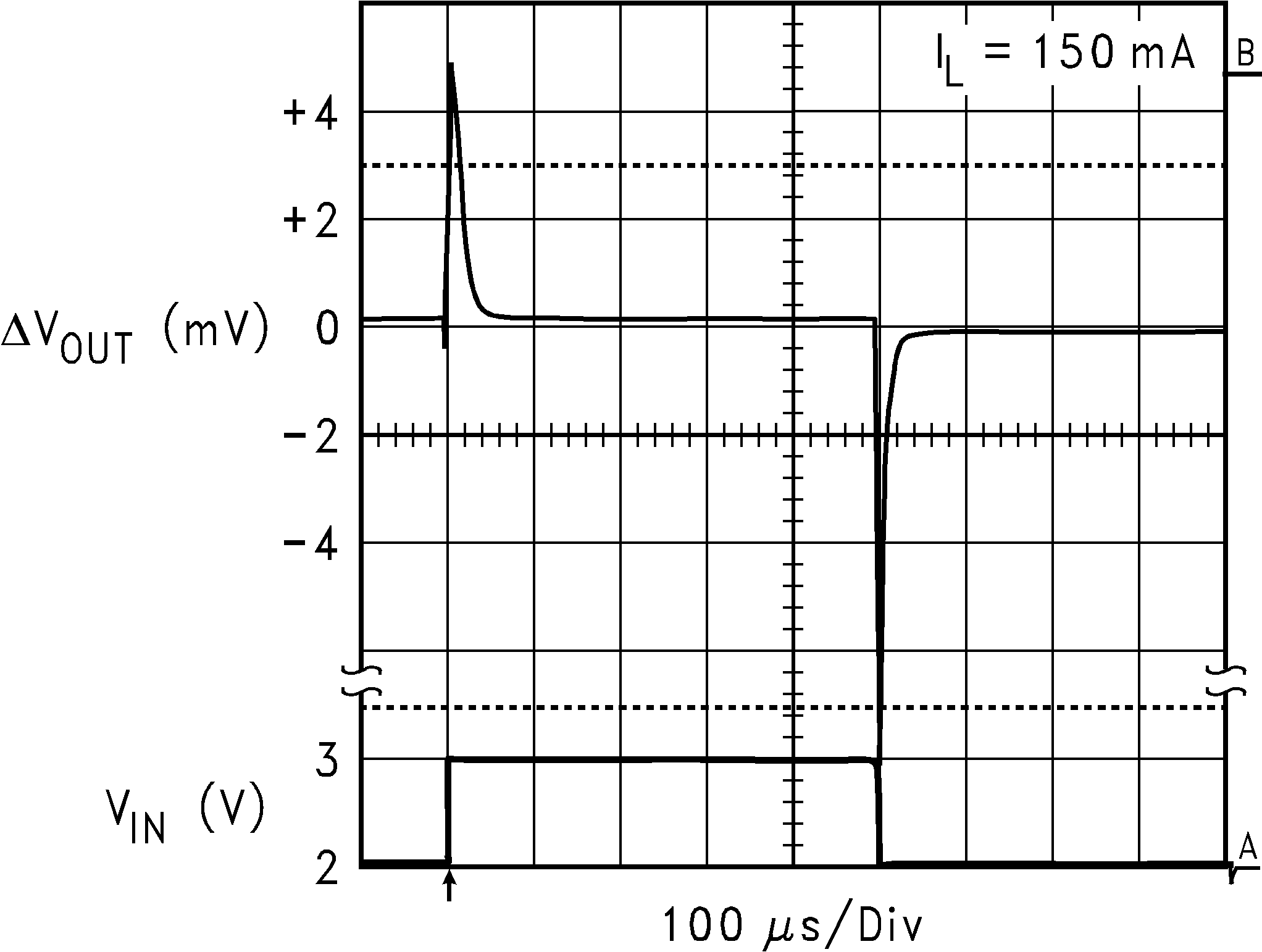
| Load = 150 mA | ΔVIN = 1 V |

| Load = 150 mA | ΔVIN = 13.8 V | |
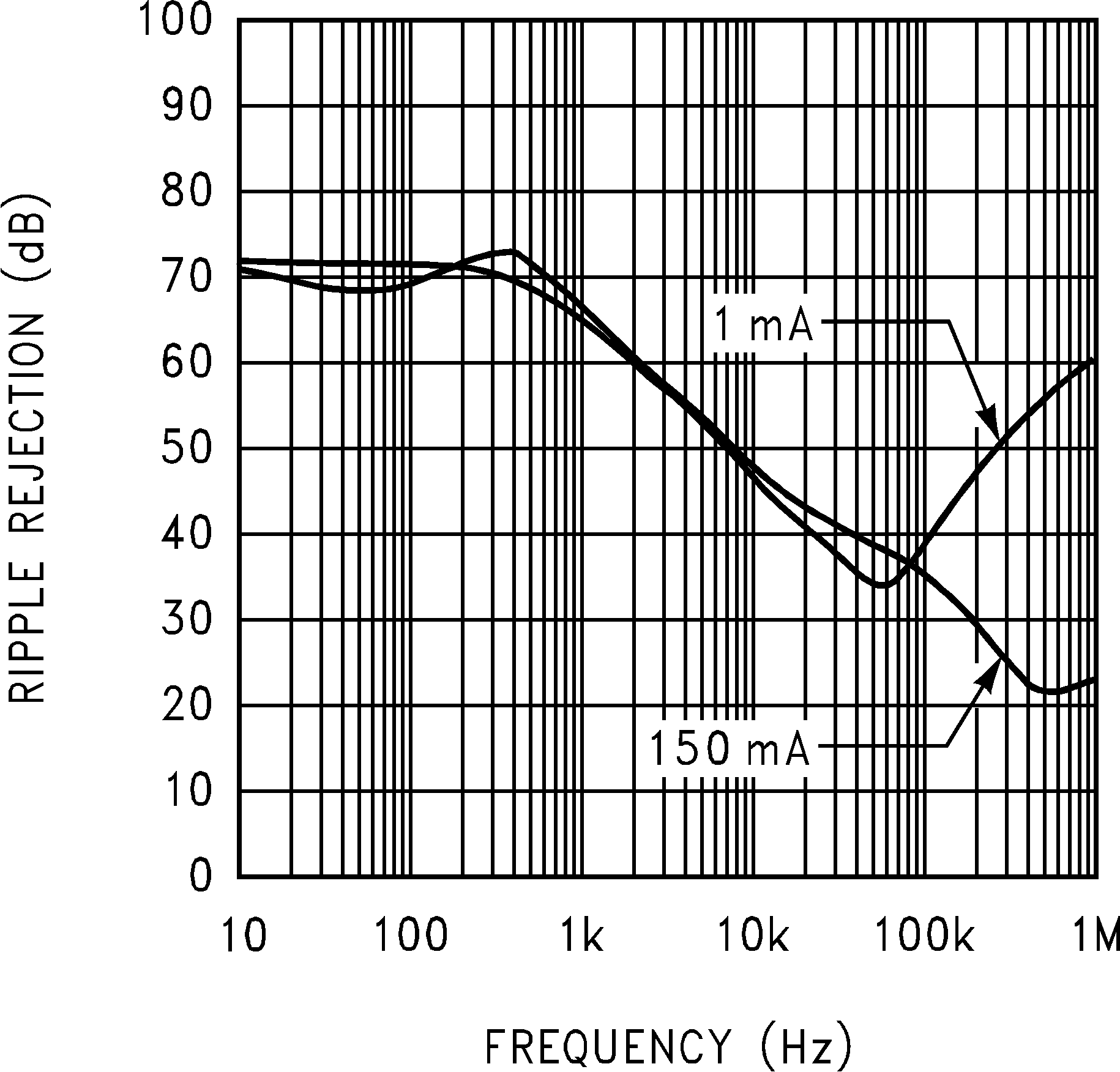
| COUT = 2.2 µF |

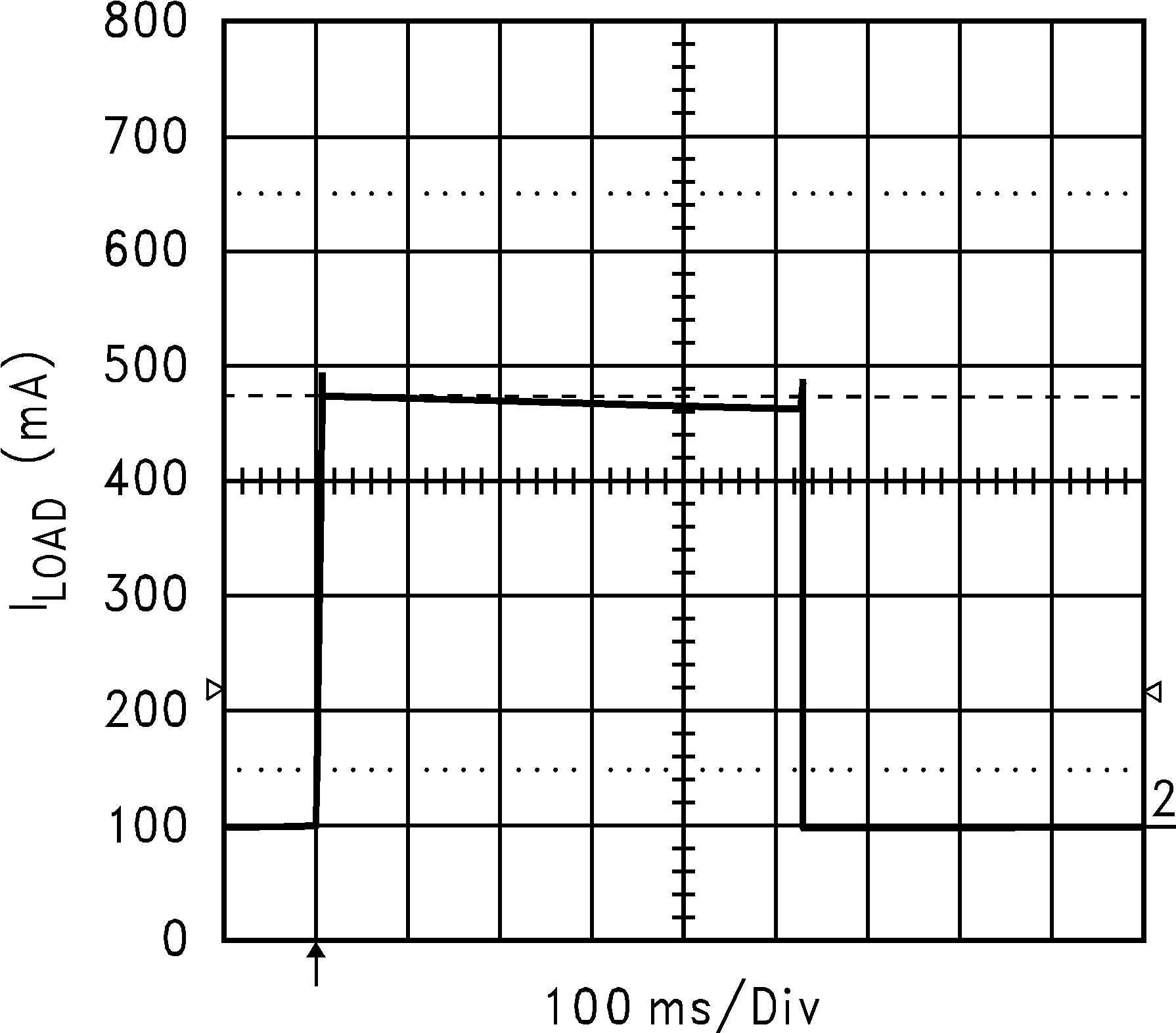
| VIN = 2.8 V | ||
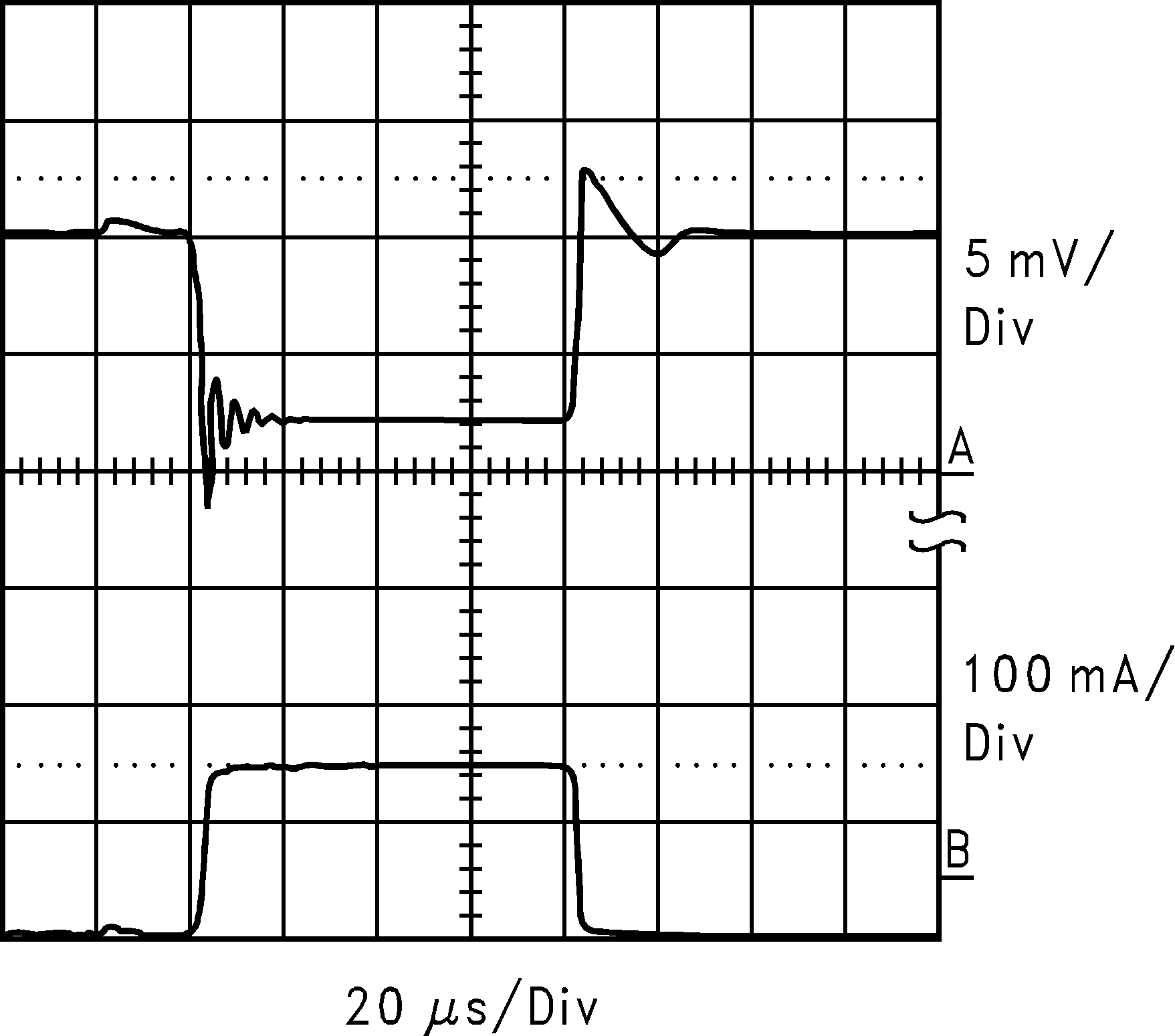
| COUT = 4.7 µF |

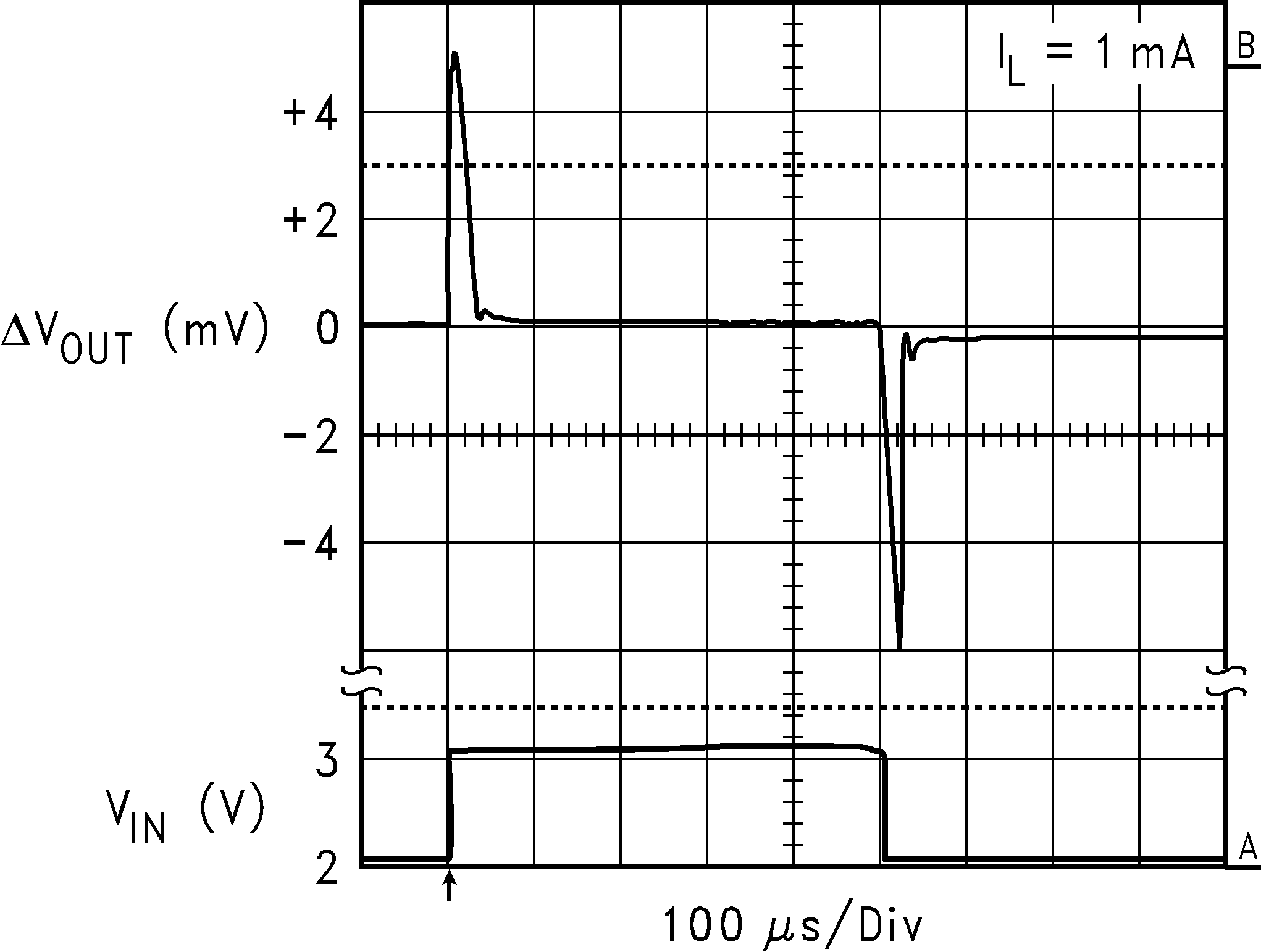
| Load = 1 mA | ΔVIN = 1 V | |

| Load = 1 mA | ΔVIN = 13.8 V |
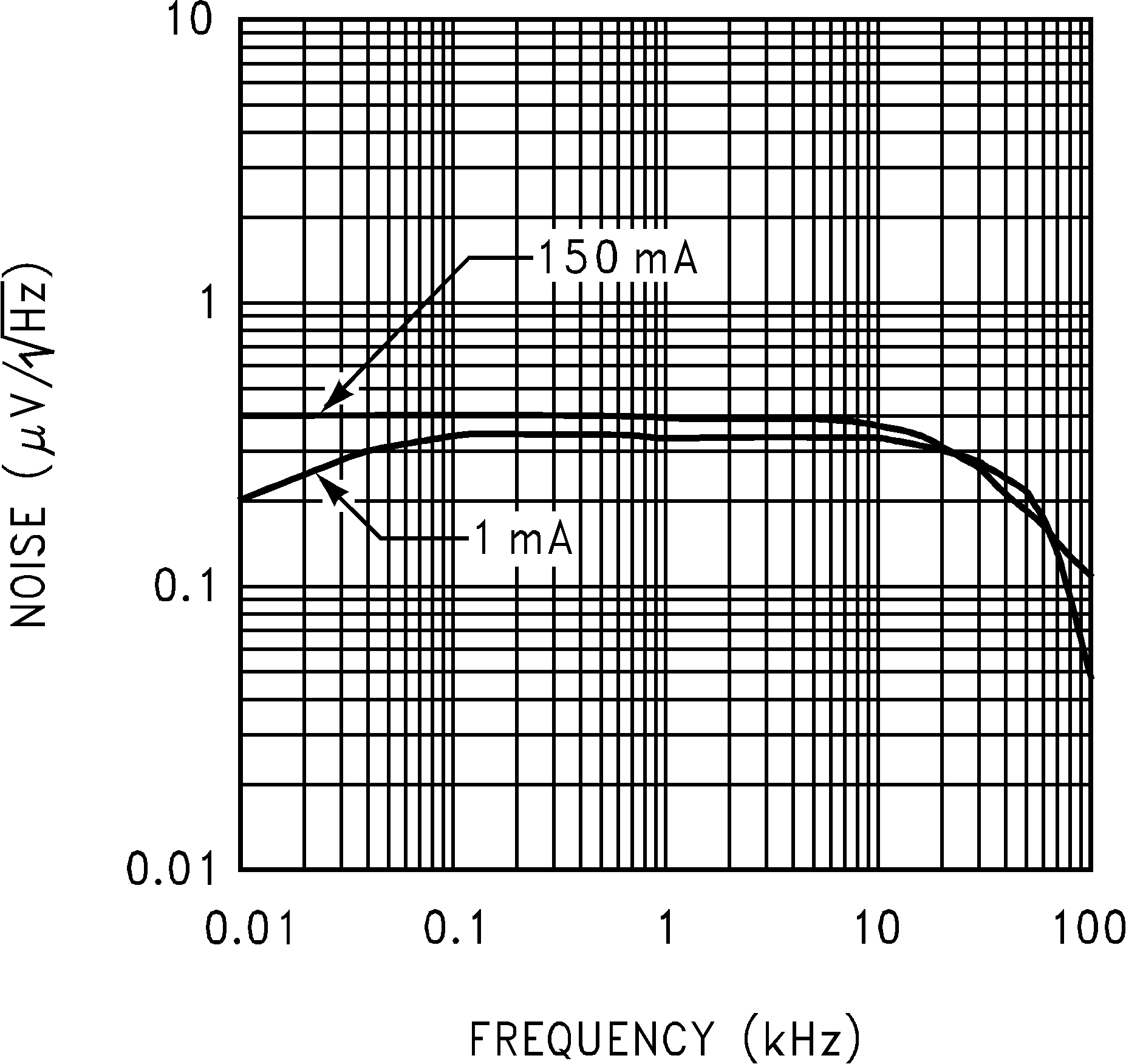
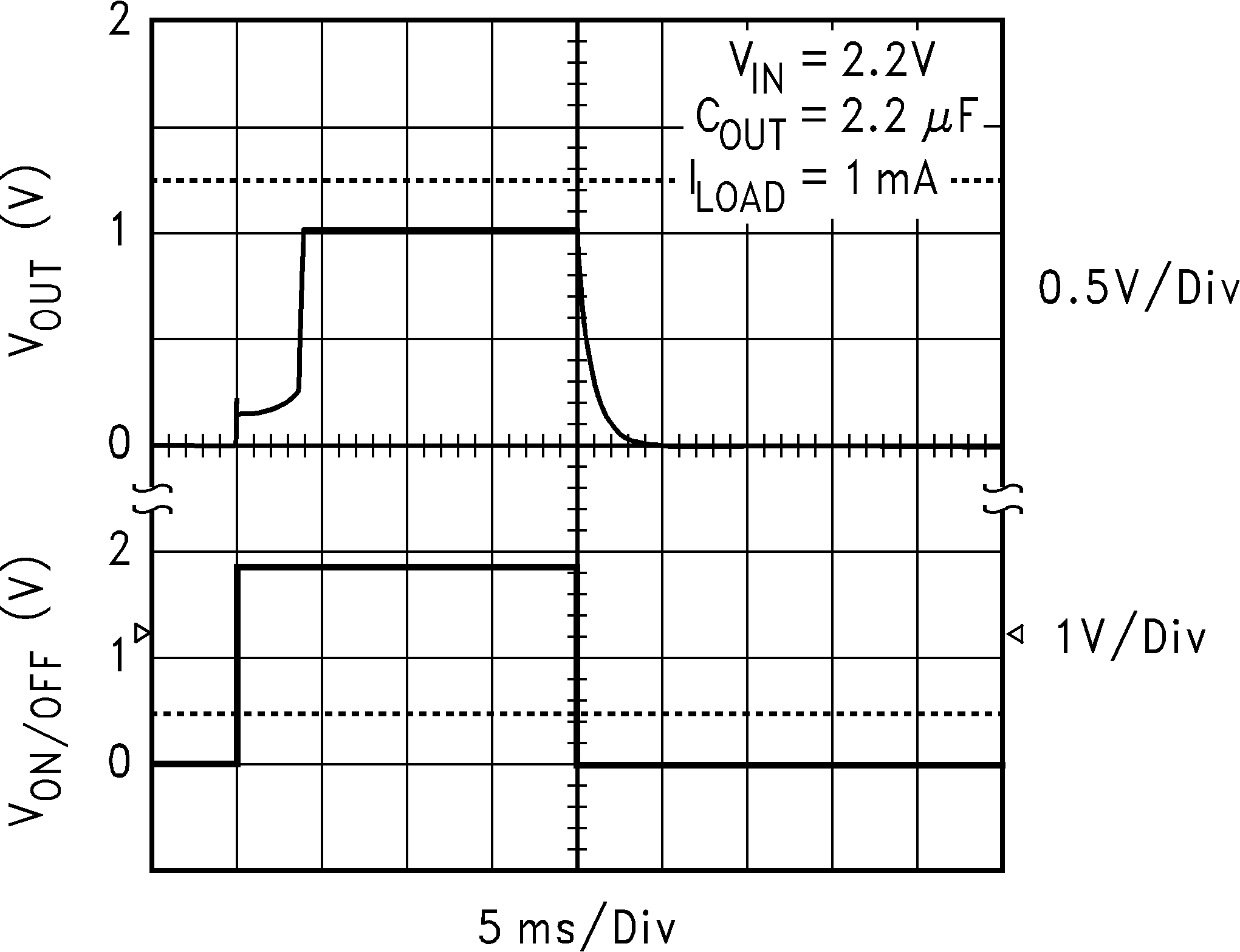

| VIN = 16 V | ||
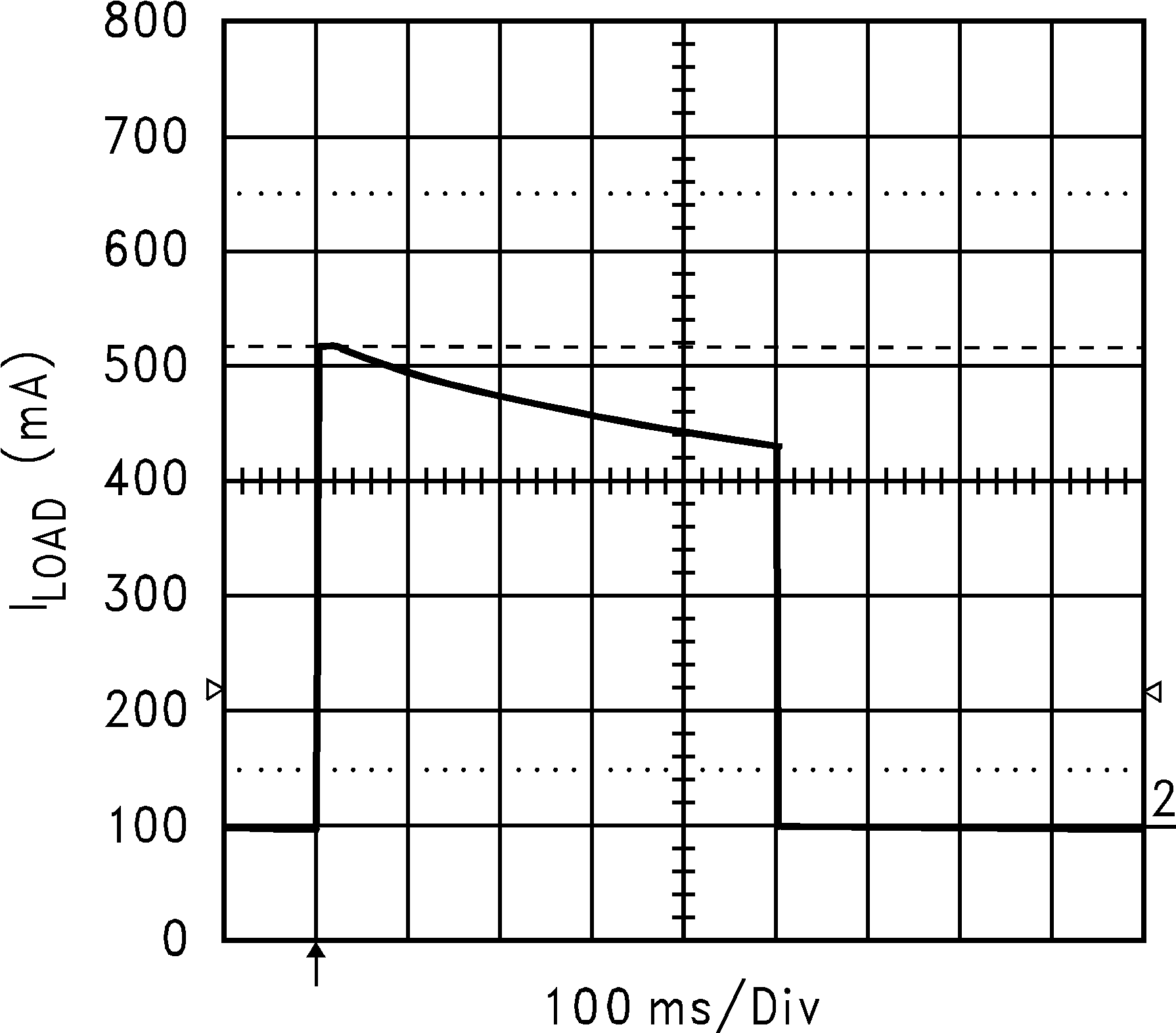
| VIN = 6 V | ||
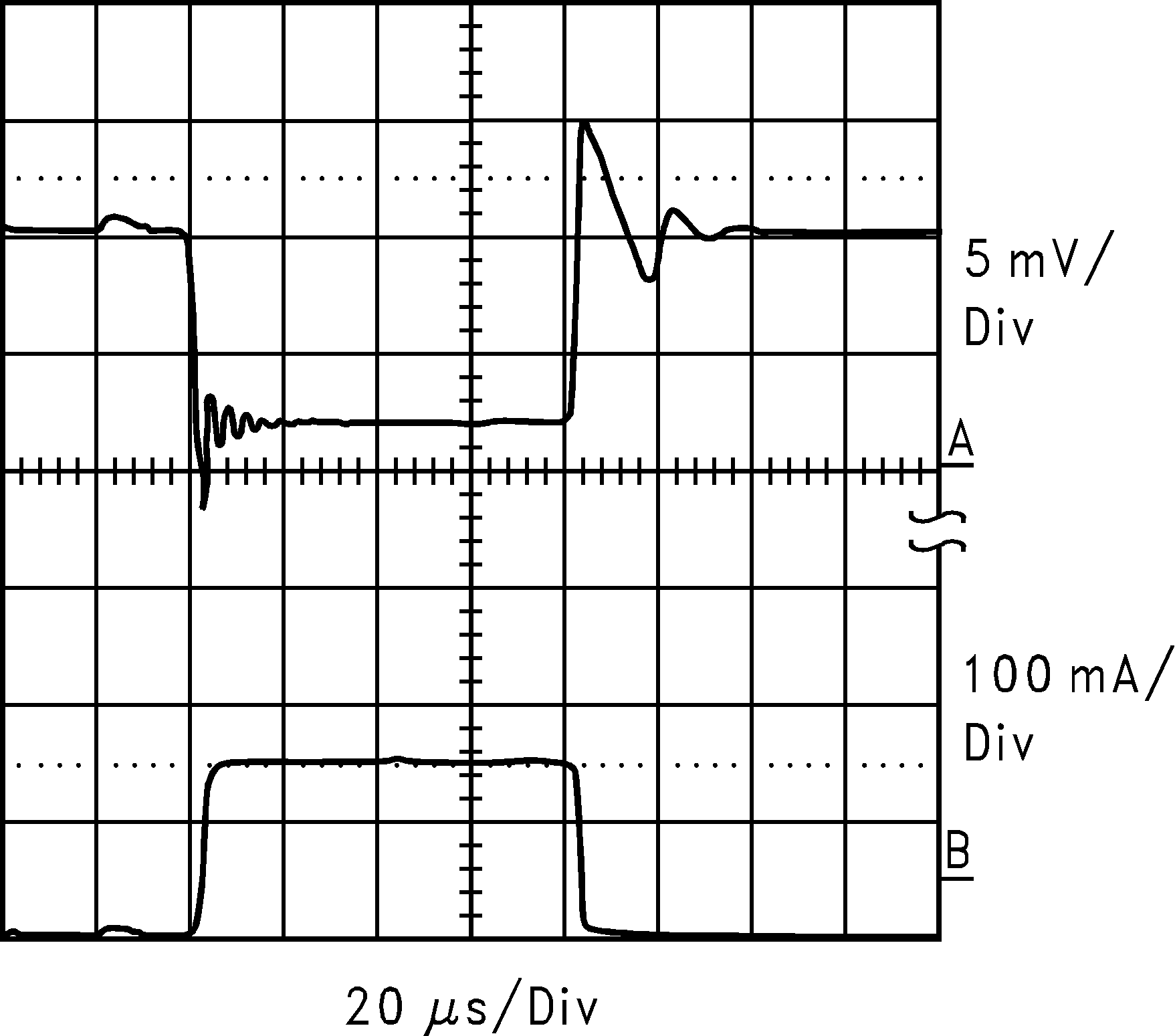
| COUT = 2.2 µF |